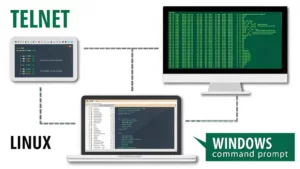Table of Contents
How to delete a file in Linux is one of the most essential skills every beginner should learn. If you’re new to Linux, figuring out how to delete files and folders might seem confusing at first. But don’t worry—this guide will walk you through how to delete a file in Linux step-by-step using safe and simple commands. Whether it’s a single file, a directory, or multiple items, Linux gives you powerful tools to keep your system tidy and organized.
1. How to Delete a File in Linux rm
The most common way how to delete a file in Linux is with the rm (remove) command:
rm filename.txtThis command permanently removes the file filename.txt. Be careful—there’s no trash or recycle bin to recover from by default.
2. Remove Multiple Files
You can delete several files at once by listing them:
rm file1.txt file2.log file3.jpgOr use a wildcard to delete all files with a specific extension:
rm *.log3. Delete an Empty Folder
To remove an empty directory, use rmdir:
rmdir old_folderThis works only if the folder is completely empty. Otherwise, you’ll get an error.
4. Delete a Folder and Everything Inside
To remove a folder and all of its contents, use rm with the recursive -r flag:
rm -r my_folderThis will delete the folder and all files and subfolders within it.
5. Add Confirmation Prompt with -i
If you want a safer approach, add the -i (interactive) flag:
rm -ri my_folderThis will ask you to confirm each file or folder before it’s deleted, which is ideal for beginners.
6. Force Delete Without Warnings
Advanced users sometimes use the force flag -f to suppress warnings:
rm -rf unwanted_folderWarning: This command will delete everything instantly without asking. Use it carefully!
7. Delete Hidden Files in Linux
Hidden files start with a dot (e.g. .bashrc). To remove one:
rm .hiddenfileTo delete all hidden files in a folder:
rm .*Tip: Be extra cautious—.* can match . and .. which refer to current and parent directories!
Can Deleted Files Be Recovered in Linux?
Usually, no. The rm command permanently removes files and doesn’t send them to a trash bin. However, there are a few options:
- If you’re using a desktop environment (like GNOME or KDE), GUI-based file managers may use a trash folder.
- Data recovery tools like
testdiskorextundeletecan attempt recovery, but success isn’t guaranteed. - It’s always safer to back up important files before deleting anything.
Tips for Safe File Deletion in Linux
- Use
rm -iwhen learning to avoid mistakes. - Always double-check paths before using
rm -rf. - Use wildcards cautiously.
rm * .txt(with space) is not the same asrm *.txt. - Consider aliasing
rmtorm -iin your.bashrcor.zshrc.
Conclusion: Mastering How to Delete a File in Linux
Now that you’ve learned how to delete a file in Linux using seven safe and practical methods, you can confidently manage your system’s files and directories. Whether it’s a single document or an entire folder, the Linux terminal gives you full control to keep things clean and organized.
Just remember—once deleted, most files in Linux are gone for good unless you’re using desktop trash or special recovery tools. That’s why it’s essential to double-check before hitting Enter, especially when using rm -rf.
Practicing how to delete a file in Linux on test files is a great way to build confidence. As you continue exploring Linux, you’ll find that mastering file operations like this one lays a solid foundation for more advanced tasks.
Looking to expand your skills? Don’t miss our step-by-step guide on how to unzip files in Linux to learn how to uncompress and extract your files efficiently.
Looking to learn even more? Check out our guide on how to zip a file in Linux for managing file compression too!
For advanced help, visit the Linux man page for rm or explore the Arch Wiki file deletion page.
Happy cleaning! 🧹🐧




